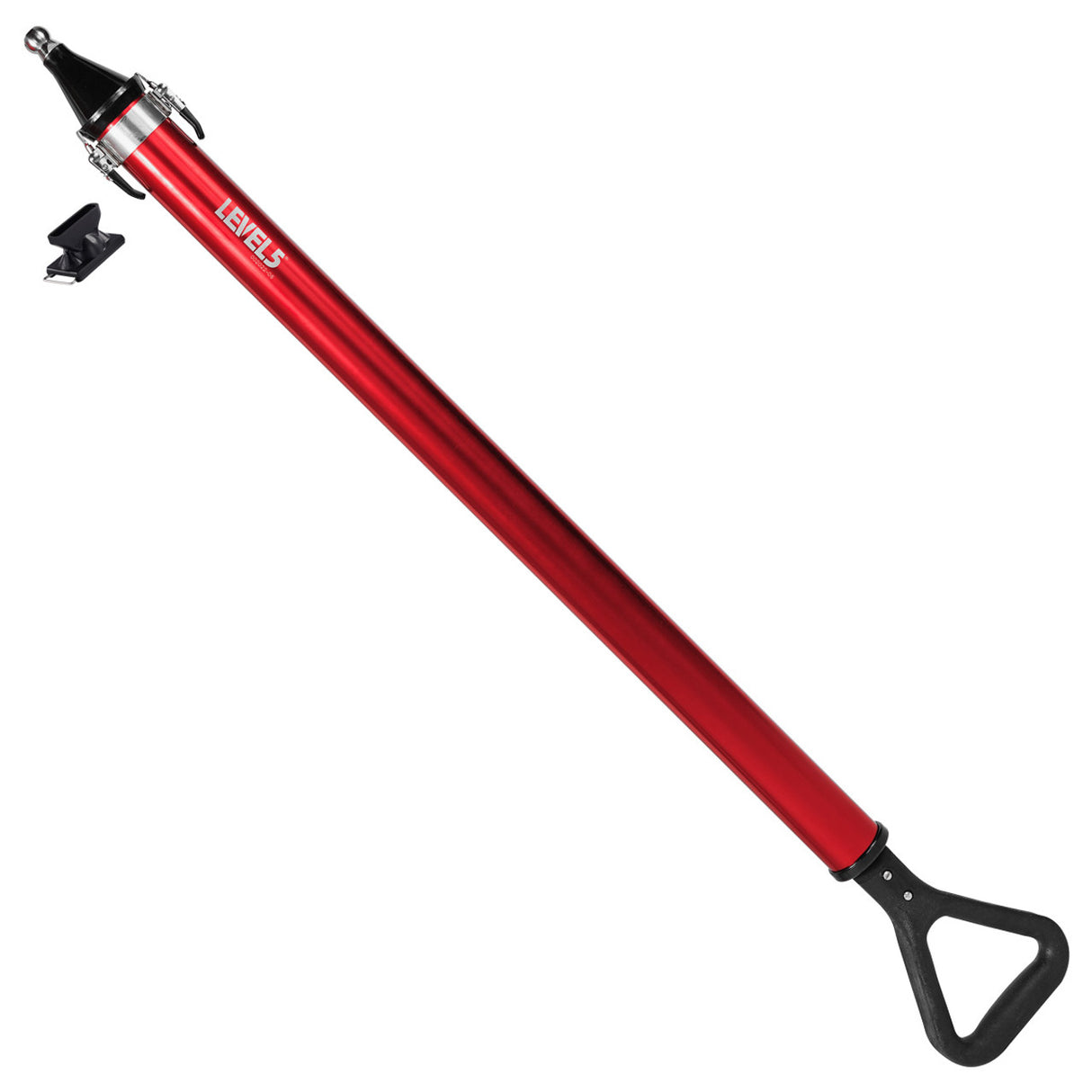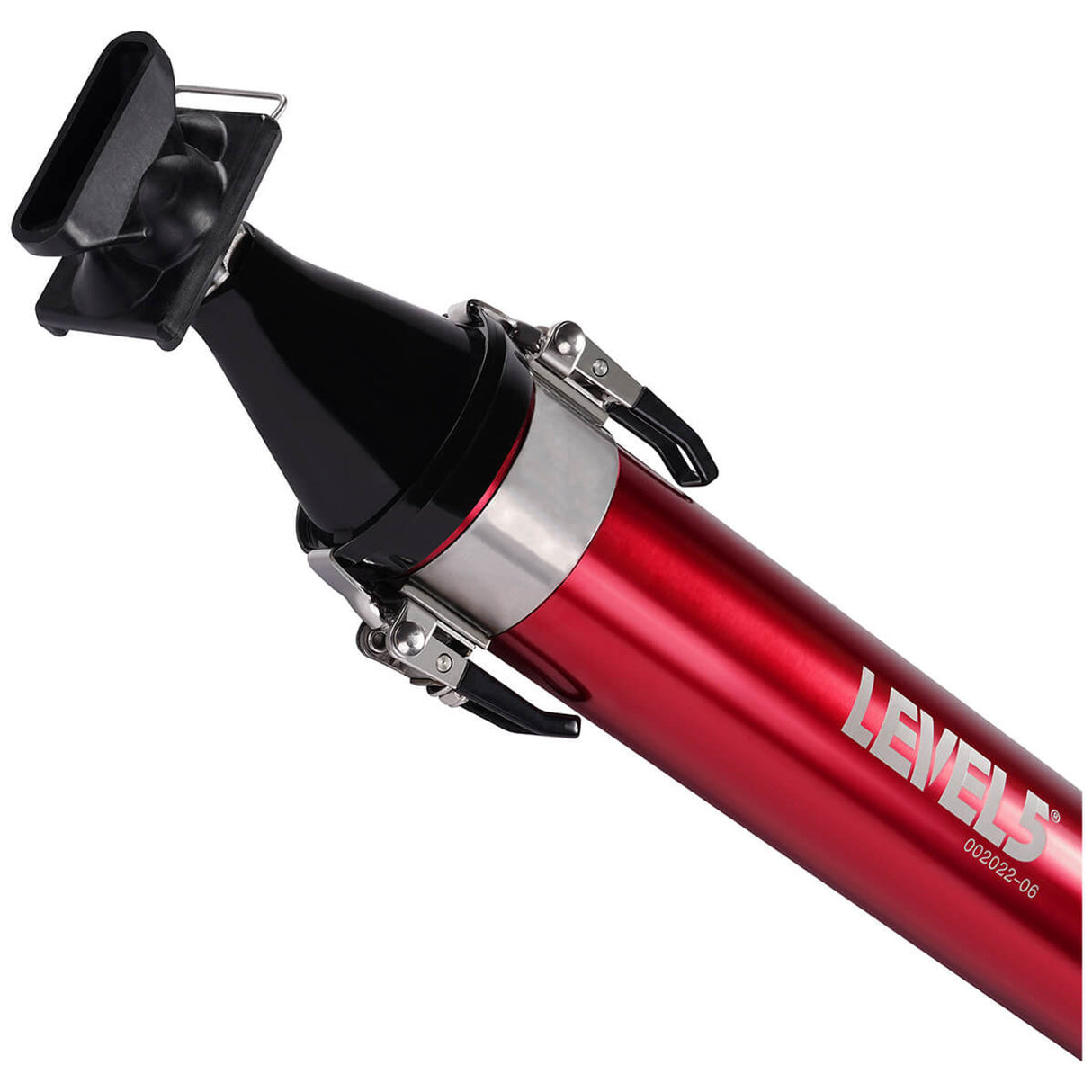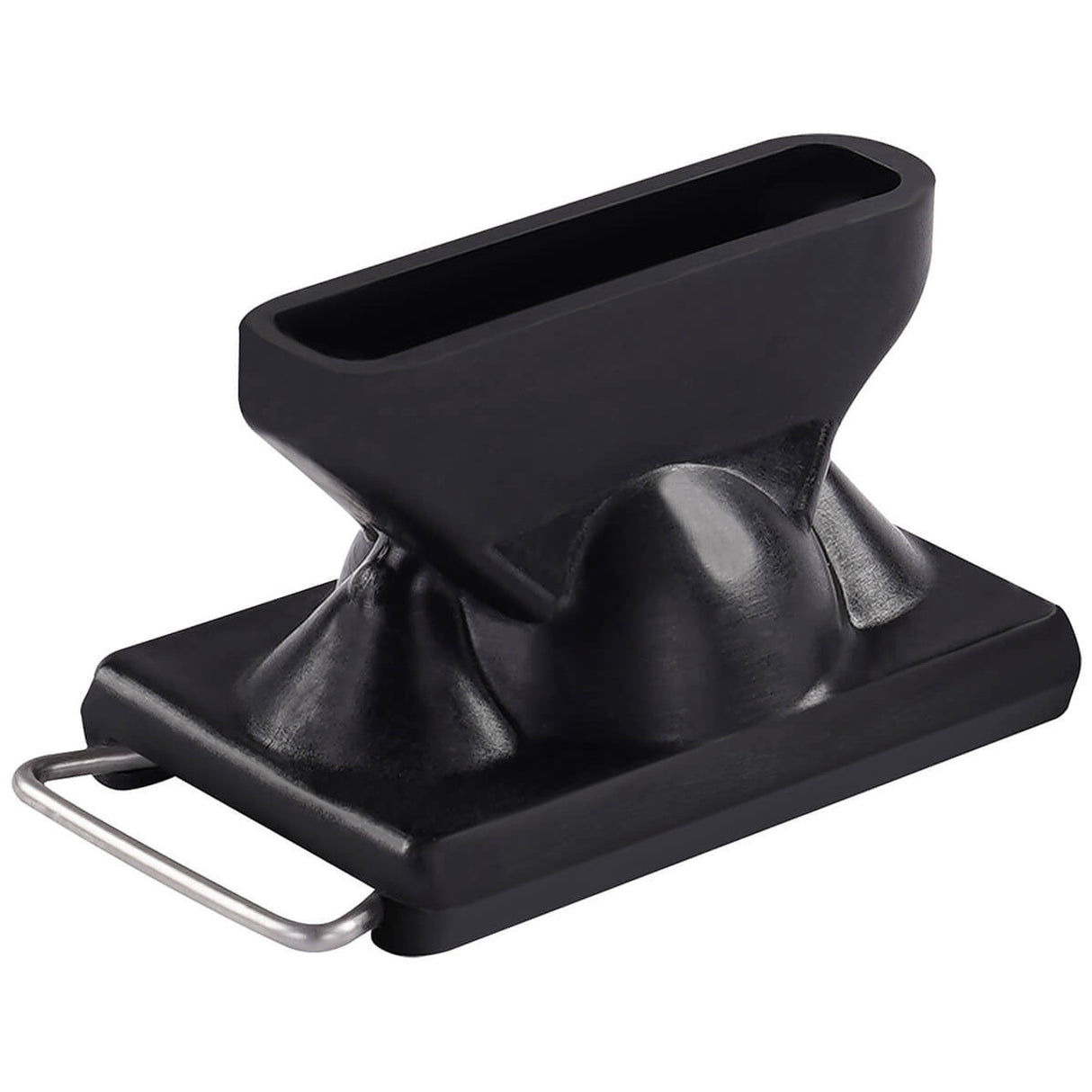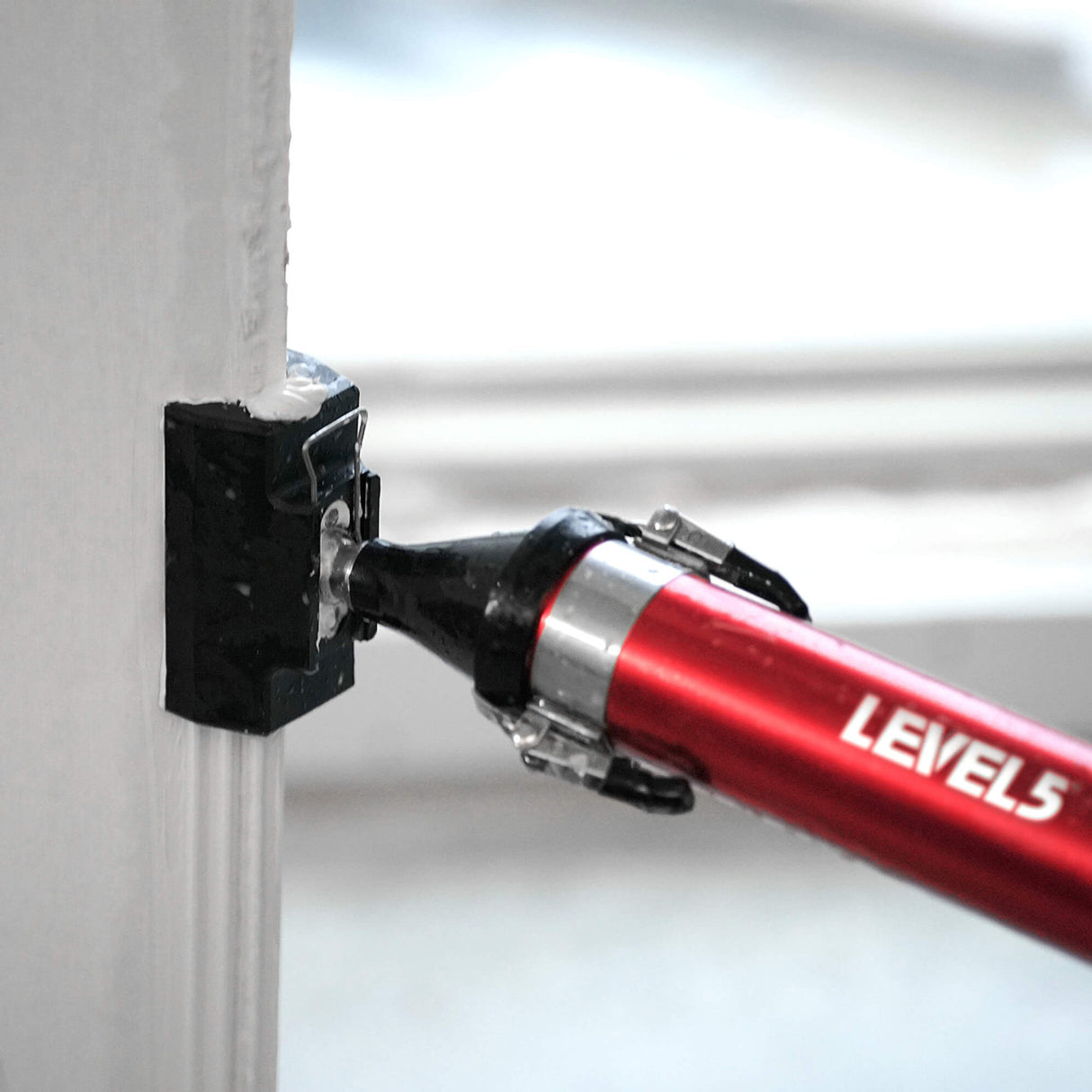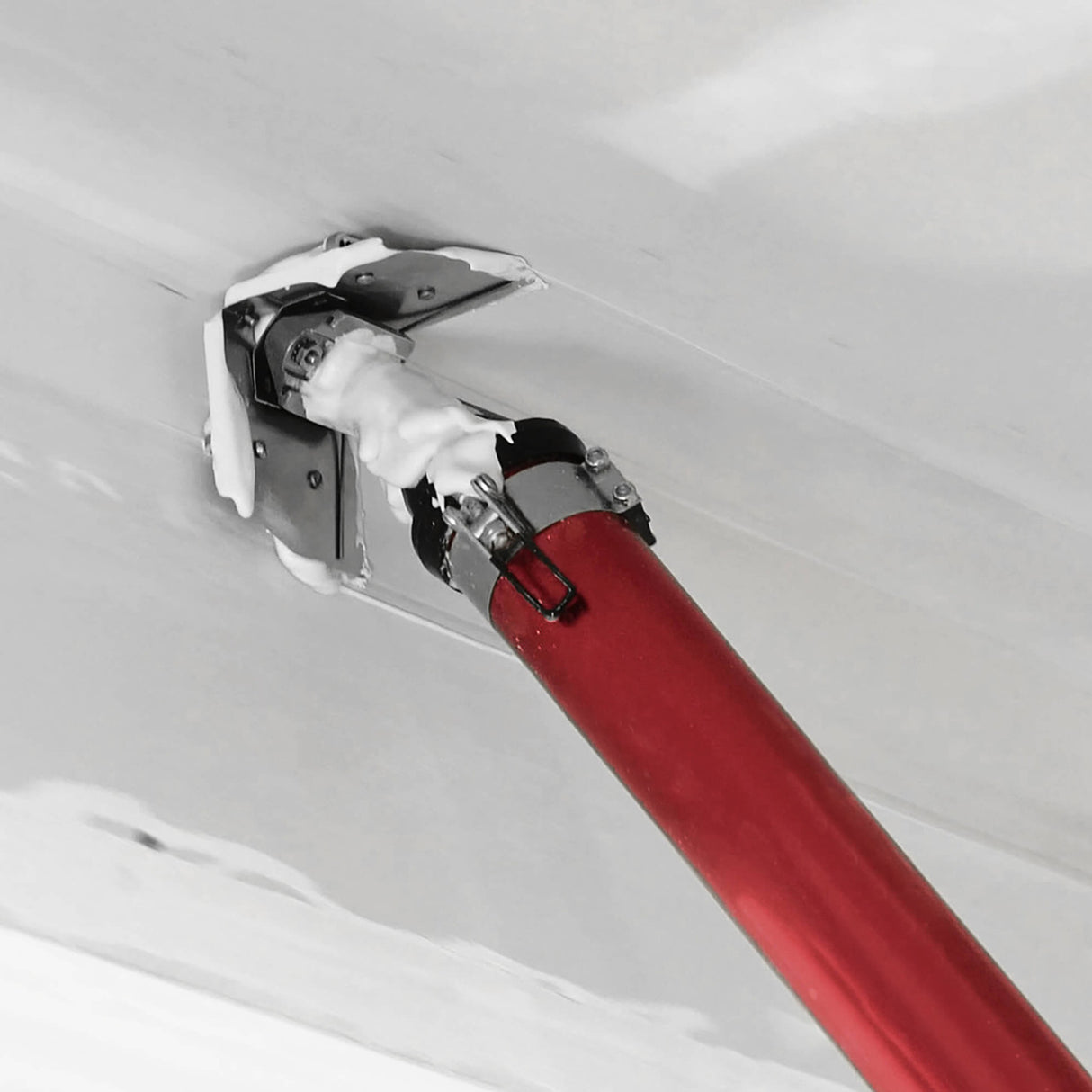The drywall compound applicator tube is a versatile tool that can be used to draw finishing compound from a bucket and apply it to drywall using various finishing heads. It features a universal ball nozzle and comes with a BONUS flat box filler attachment.
Simply draw your mixed finishing compound from a bucket and apply it to drywall using inside and outside corner finishers, corner flushers, flat seam compound applicators, and more. The ball nozzle is compatible with a wide range of finishing heads from all leading manufacturers.
The LEVEL5 Compound Tube can also be used in conjunction with the BONUS flat box filler attachment to fill drywall flat boxes or apply large amounts of compound directly to the drywall for tasks such as wall skimming.
Note: Corner Flusher & Outside Corner Applicator not included.
Features
- Lightweight but durable high-gauge, aircraft-grade aluminum body
- High quality color anodizing for easy cleaning and corrosion resistance
- Removable cone with stainless steel ball nozzle
- Industrial-grade latches to secure the nozzle
- Proprietary urethane rubber plunger cap provides less resistance, smoother operation and a better seal than competitive models
- D-handle provides improved leverage and less hand/wrist strain
- Removable end cap (secured by o-ring gasket)
- Proprietary urethane rubber anti-leak seal
- BONUS flat box filler attachment
Cleaning & Lubrication
A PRESSURE WASHER MAKES CLEANING FAST
To ensure that your LEVEL5 automatic and semi-automatic tools last longer, it is crucial to clean them thoroughly before storing them between jobs. Although not required, a lightweight and portable pressure washer, commonly used for washing vehicles, can make light work of the cleaning process. There are many cost-effective options available on Amazon with good ratings.
LUBRICATE AFTER CLEANING
Once your automatic and semi-automatic tools are clean, it is important to lubricate all the moving parts to displace any remaining water and reduce the risk of corrosion. IMPORTANT: avoid using standard WD-40 or similar lubricants as they can be caustic and damage the rubber seals and gaskets, which in turn can affect tool performance. In fact, it's best to steer clear of any spray lubricants unless you are certain of the propellant used. For example, many spray cans use solvents like benzene as a propellant, which is a solvent.
We recommend using simple, low cost 3-in-1 machine oil, available in metal squeeze cans, to lubricate every moving part before and after use. Alternatively, if you prefer to spray the oil onto your tools, you can buy it in a larger format and apply using a hand spray bottle.

